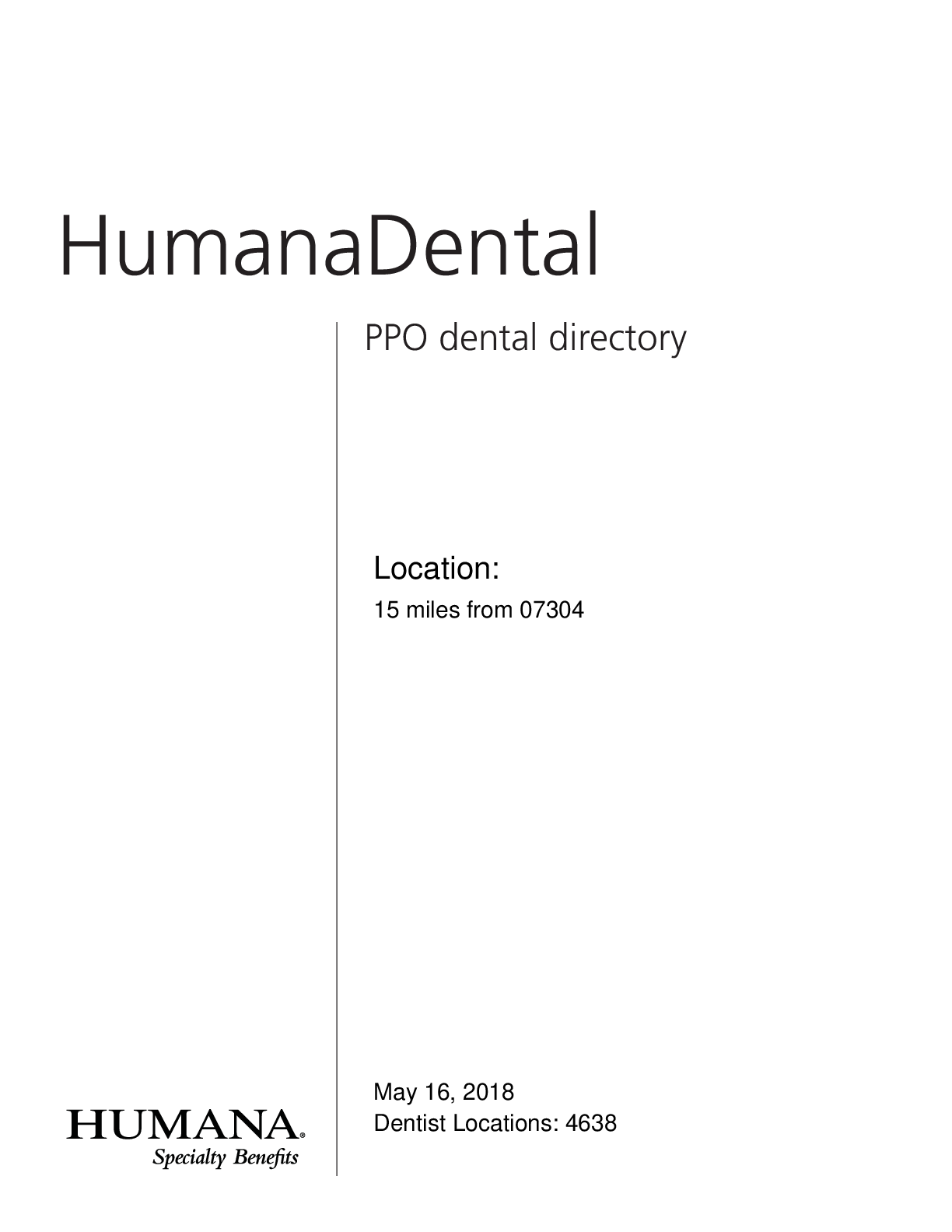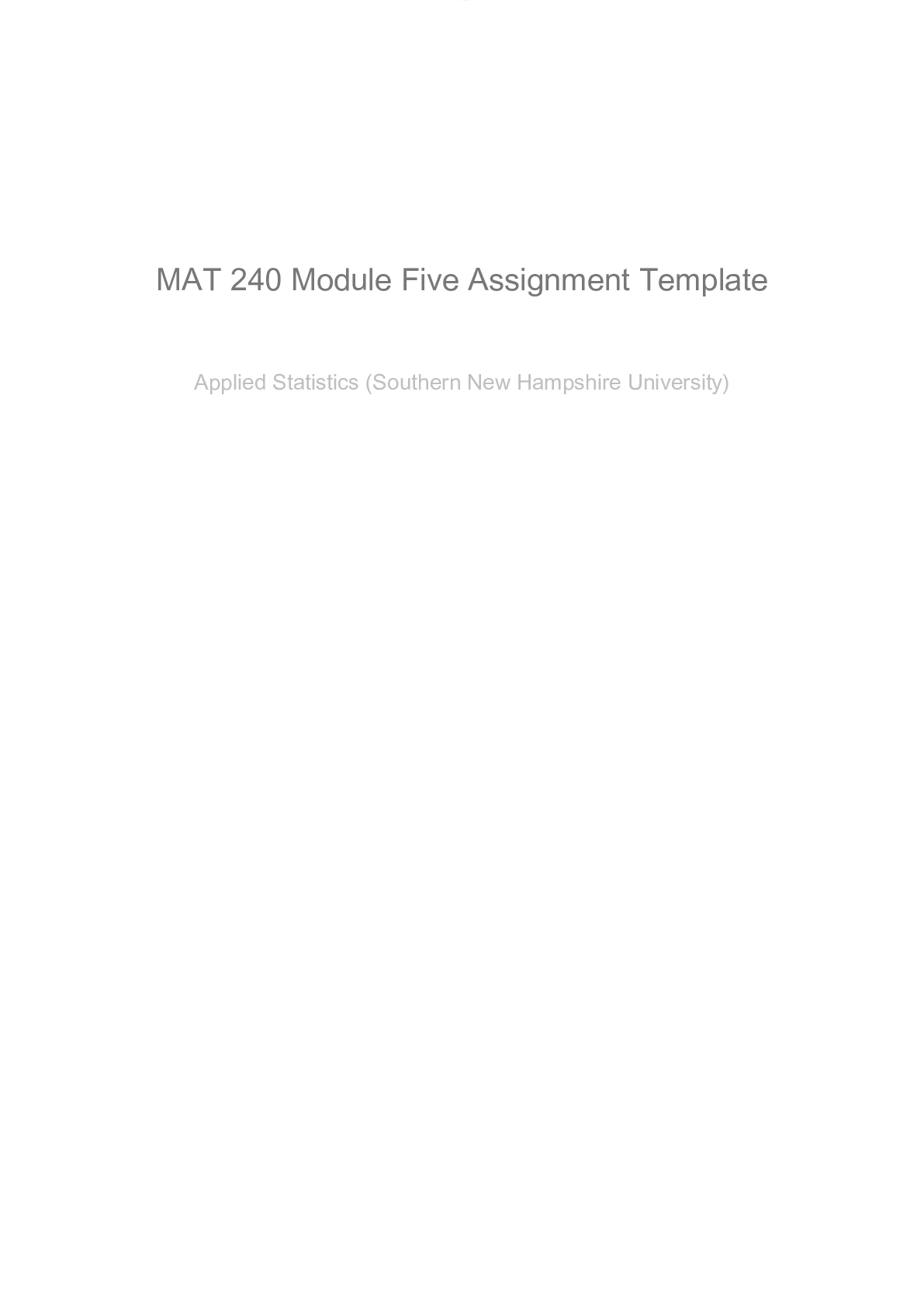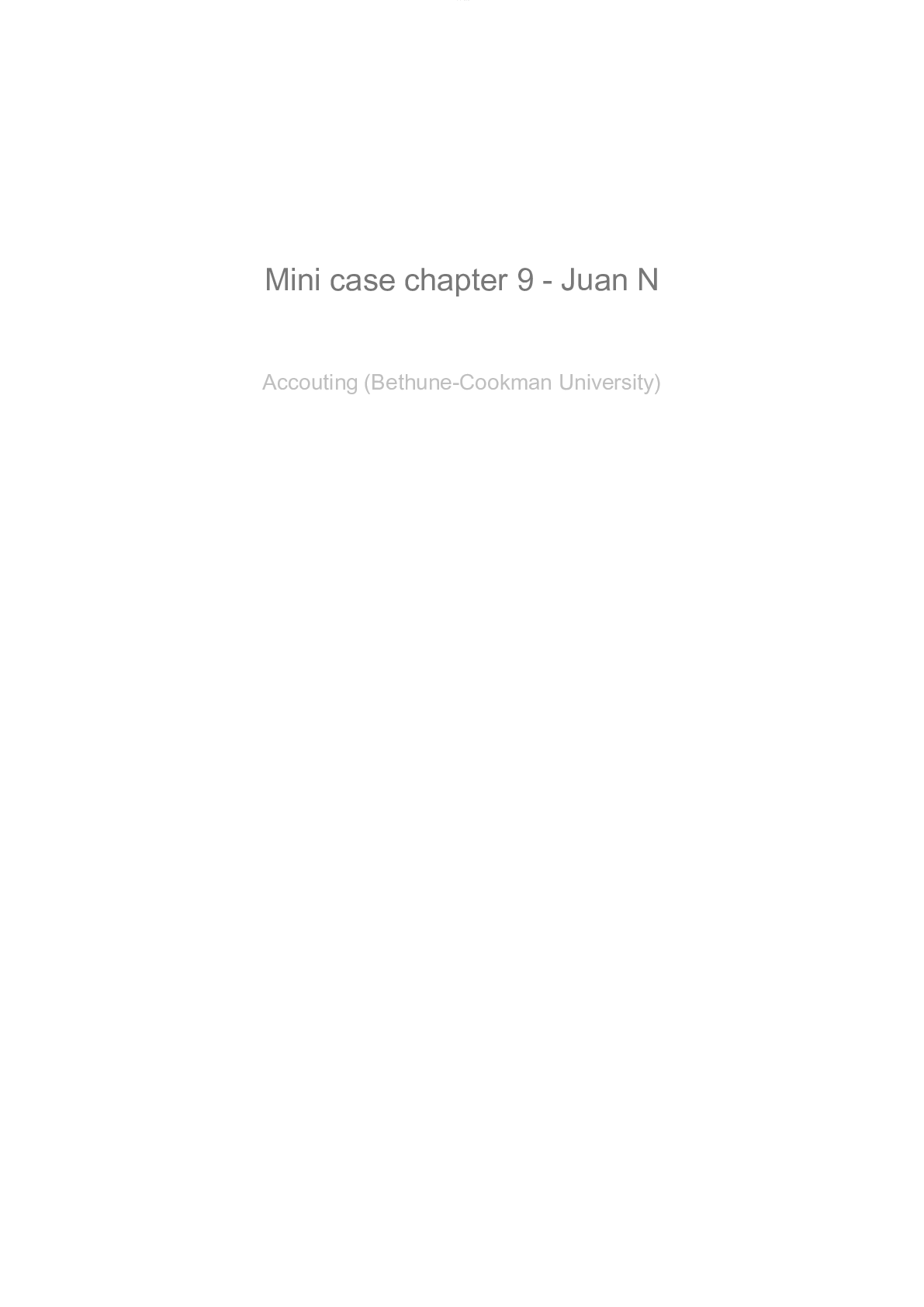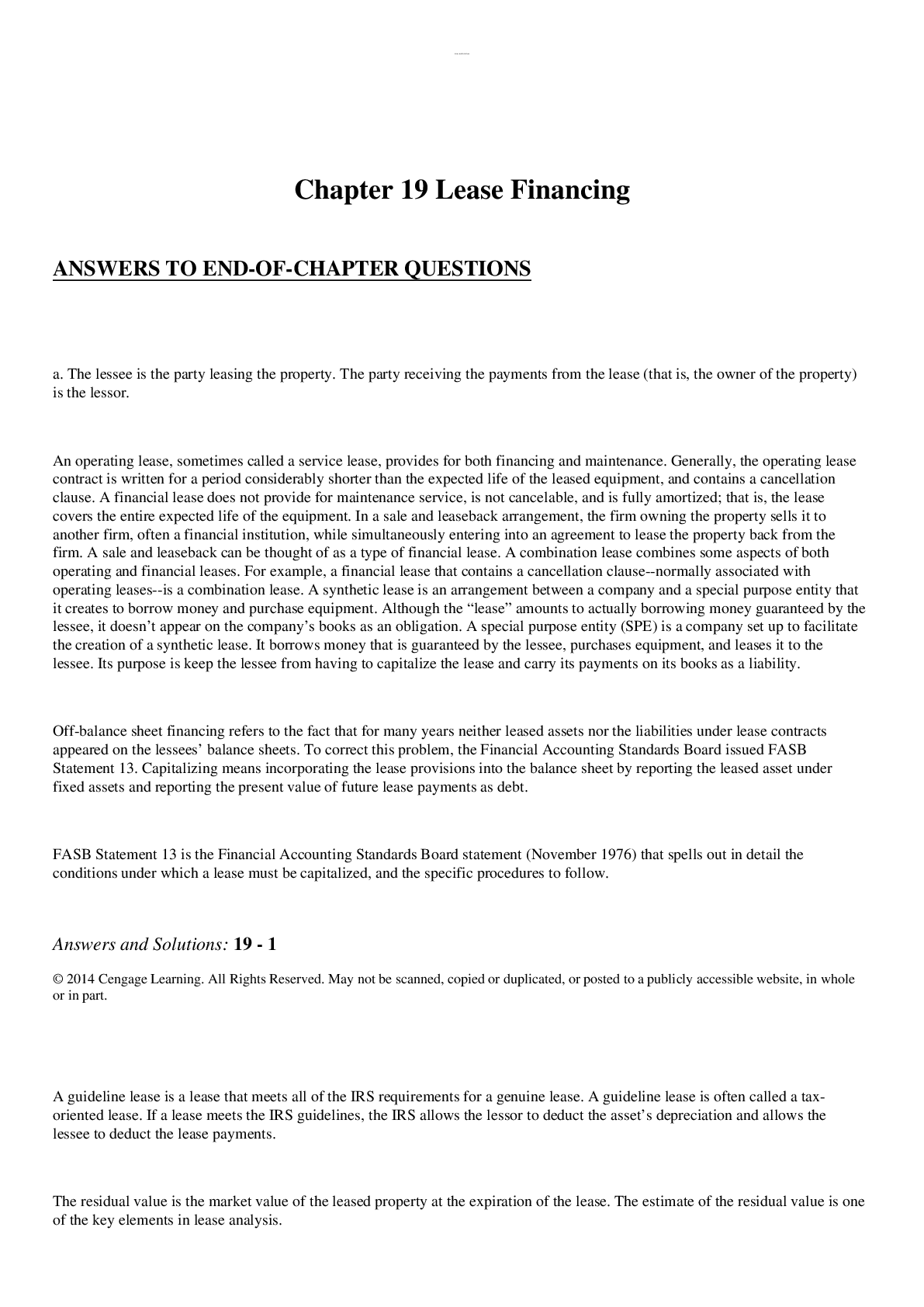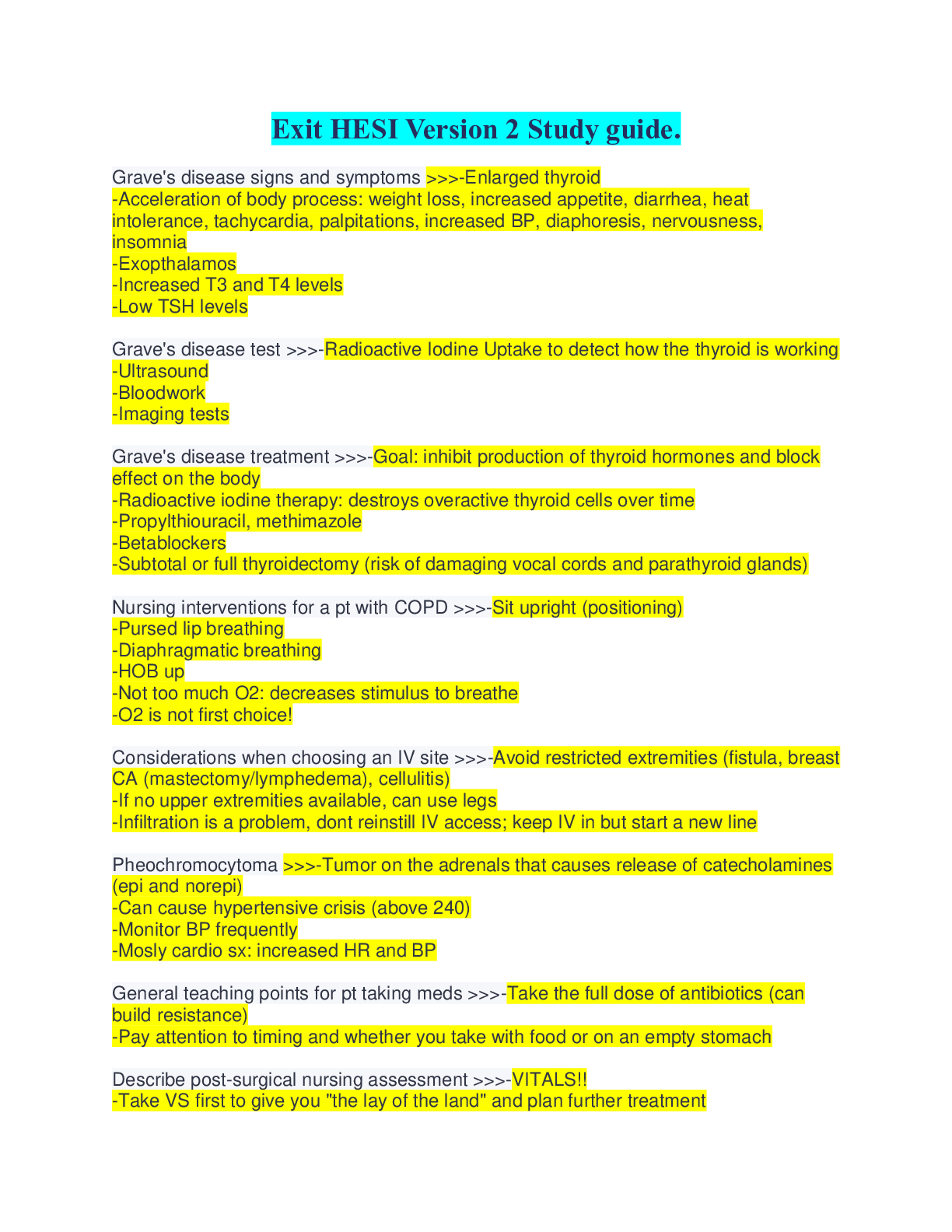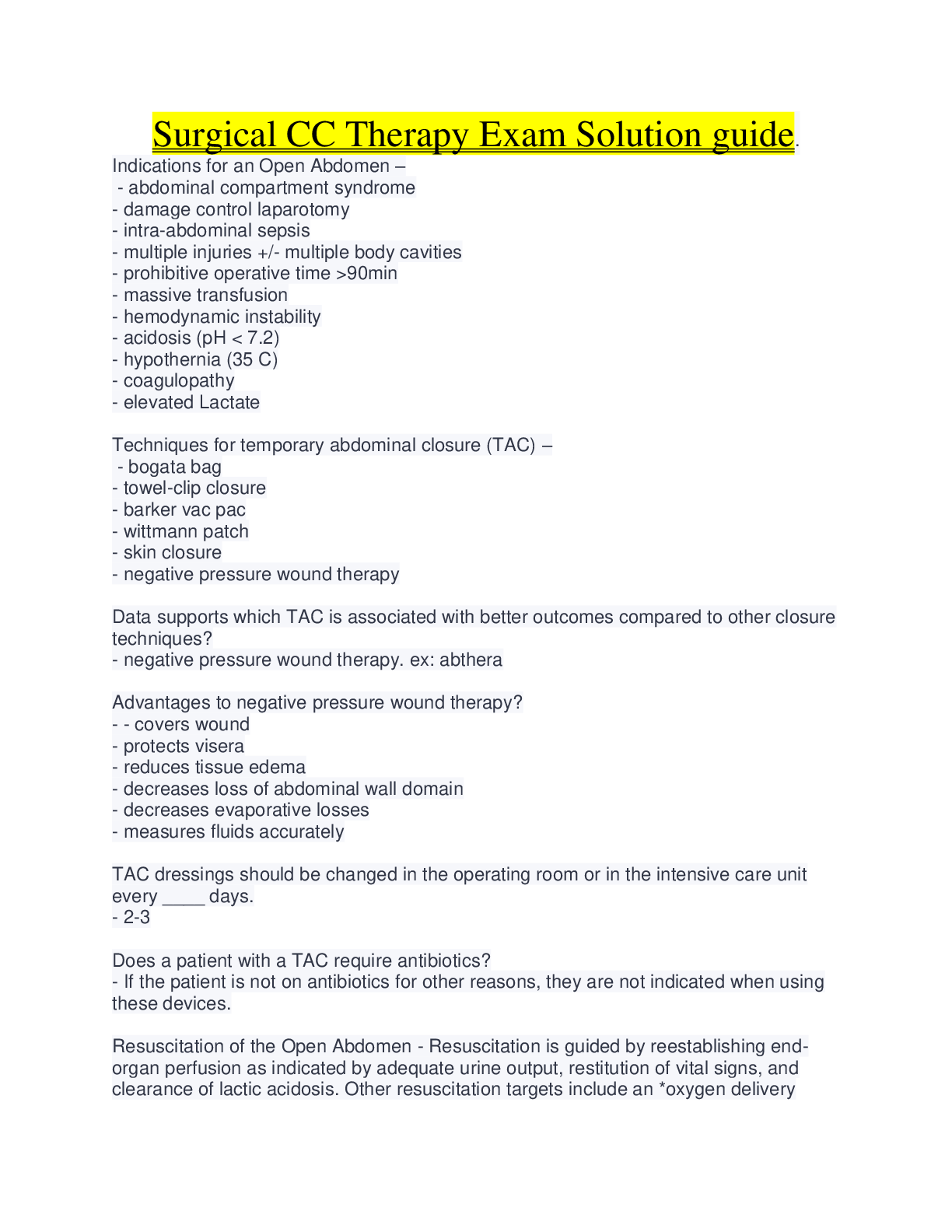*NURSING > Solutions Guide > NR601 Midterm weeks 1-4 + midterm audib Complete spring 2022 solution guide (All)
NR601 Midterm weeks 1-4 + midterm audib Complete spring 2022 solution guide
Document Content and Description Below
NR601 Midterm weeks 1-4 + midterm audible, Complete spring 2022 solution guide. Week One Developmental Changes - NR601 Midterm Week 1 2022. Purpose of the CGA (comprehensive geriatric assessme... nt): Physical health is r/t psychosocial functional ability and safe environment. 1. it helps in 2. identify potentially 3. perform - 1. dx conditions and improve outcomes 2. preventable conditions 3. patient-centered care CGA 1. Most beneficial for the vulnerable, older adults but 2. Domains: include - 1. should be completed for all older adults. 2. Physical health, functional health, psychological health, socioenvironmental support & quality of life measures. CGA Physical health 1. Medical history, PE including 2. Nutritional assessment; tools include 3. Medication review using - 1. (abnormals-differentials), ROS, diagnostics, 2. mini nutritional assessment instrument Food diary Physical assessment with measurements Biochemical markers 3. (Beers criteria) CGA Functional health 1. - goal is to improve 2. measure ADLs using 3. IADLs 4. Ask patients to demonstrate or explain how 5. Fall assessment tool 6. Mobility assessed with 7. Any change in their function is often the only sign of - 1. function and prevent decline 2. - Katz ADLs scale 3. - Lawton & Brody Scale for IADLs 4. they complete adls 5. Hendrich II Fall Risk Model 6. Time to get Up and Go Test 7. illness or could be the first sign of exacerbation of a chronic illness CGA Psychological health (cognition and mood) tools and acronyms include *dementia, delirium and depression are what you're evaluating for in geriatric MH - DSM-5 (delirium vs cognitive impairment) MMSE CDT, word recall Mini-Cog SLUMS Confusion Assessment Method (CAM) Geriatric Depression Scale- PHQ-9 HOPE, FICA, SPIRIT-These are acronyms to assess spiritual beliefs About the Cognitive Assessment tools MMSE-ID scoring ranges Minicog-explain type of tests and scoring - The MMSE Score of 24-30 is the normal range. Scores of 20-23 represent mild cognitive impairment or possible early-stage Alzheimer disease. The Minicog providers might prefer b/c its shorter clock drawing and three-word recall. The score range is 1-3. Diagram of Cognitive Disorders and differences w/ each - Depression does not have an abrupt onset, but patients will usually be able to identify some time frame for when the mood disorder started. It is important that,as providers,we have identified a set of favorite screening tools CGA Socioenvironmental 1. Social network/support 2. What tool assesses Social isolation 3. Living situation includes 4. Environmental includes 4. Economic includes - 1. blank 2. assessment (lubben social network scale) 3. (housing, transportation 4. ( utilities, heat, water) 5. (income, assets, afford meds and healthcare) Quality of life 1. the medical outcomes study short form 36 looks at - Physical/mental/social domains Personal resources Preference of care (advance directive) Age related changes: Physiological 1. Skin- 2. Resp: - 1. decrease dermal thickness/elasticity = SBD risk Decrease vascularity= less sweat, odor, heat loss= altered temp regulation, risk of heat stroke, change in fluid needs 2 decreased vital capacity = decreased gas exchange processes Cilia atrophy=increase infection risk Decreased resp muscle strength=risk for atelectasis Age related changes: Physiological 1. CVD: 2. GI: - 1. fibrosis to heart valves= reduced SV, CO= decreased stress responses Fibroclastic SA node thickens= slower HR=increased arrhythmias Decreased baroreceptors sensitivity=decreased sense to bp changes = more falls, injuries 2. liver smaller=decreased storage Decreased muscle tone=altered motility Decreased metabolism=need for less calories Lab results: normal levels vary with age, sex, race (don't assume abn lab result is part of aging processes) * Clinicians may find that reference ranges, therefore, may be preferable - Decreased CrCl, GFR: nephrotoxic drugs Digoxin H2 blockers Lithium Water-soluble atb- ceftriaxone, piperacillin, gentamycin, vanco Review page 1285 table(Dunphy) Atypical Presentations of common diseases 1. Acute abd illness 2. Depression 3. Hyperthyroidism 4. Hypothyroidism 5. Malignancy 6. GB disease - 1. Vague sx, acute confusion, constipation, mild discomfort, tachypnea 2. Anorexia, vague abd cramps, new constipation, agitation, insomnia, lack of sadness 3. Apathetic thyrotoxicosis- fatigue, weak, wt loss (not gain), palpitations, tachycardia, new afib onset, HF if undx 4. Confusion, agitation, cardiac manifestations, new anorexia, wt loss, arthralgia 5. Jaundice; New/worse back pain 2nd to mets form slow-growing breast masses or silent bowel masses 6. Jaundice Atypical Presentations of common diseases 1. MI 2. Infectious disease 3. Peptic ulcer - 1. No chest pain, fatigue, nausea, decreased function and cognition, classic: dyspnea, epigastric pain, weakness, nv, hx of cardiac failure Higher in females: non-Q-wave MI 2. Low grade fever or none, malaise, sepsis: w/o leukocytosis or fever Falls, new confusion, or AMS Decreased function, anorexia 3. Dyspepsia, early satiety Painless, bloodless stool New confusion Tachycardia, hypotension Atypical Presentations of common diseases 1. Pna 2. TB 3. UTI - 1. Mild cough without copious sputum, no fever or mild, confusion Tachycardia, tachypnea, anorexia, malaise Pulmonary edema Lack of paroxysmal nocturnal dyspnea, Insidious onset of decreased function, appetite, fluids, confusion 2. Hepatosplenamegaly, abn liver tests, anemia 3. No or mild fever, worse cognition, dizziness, anorexia, fatigue, weakness Geriatric Syndromes- multifactorial: sx seen in elderly that are r/t combo of diseases 1. SPICES (assessment tool) - 1. Sleep disturbance Problems eating or feeding Incontinence Confusion Evidence of falls Skin breakdown Categories of Aging 65-74 = 75-84 = old 85-older = oldest - 65-74 = young old 75-84 = old 85-older = oldest Causes of delirium - Drugs Electrolyte imbalance Lack of drugs (w/d, uncontrolled pain) Infection Reduced sensory input (vision/hearing) Intracranial (CVA, SDH) Urine retention, impaction Myocardial/pulmonary conditions 1. Exercise in Older Adults- experts recommend 1. Barriers to exercise - 1. moderate- intensity aerobics 30min x5 days a week, or vigorous intensity aerobic 20 min x 3 days a week( can be intermittent throughout the day) 2. Lack of time Perceived need for equip Disability or function limitation Unsafe neighborhood/weather conditions Depression/lack of motivation/sig life event High BMI Don't know what to do Exercise in Older Adults Facilitators - Social networks Positive self worth Motivation to do it Good health Good contact with prescriber Reg, scheduled programs] Happy with program Insurance incentive Improved mobility/health Exercise in Older Adults Contraindications - Unstable angina Uncompensated HF Severe anemia Uncontrolled BG Unstable aortic aneurysm Uncontrolled HTN/tachycardia Severe dehydration or heat stroke Low o2 sat Exercises for sleep - Tai-chi, walking, aquatherapy, biking ( assess balance and fall risk 1st) Exercise for flexibility: To maintain flexabilty, perform exercises 10 min x 2 days a week Screenings before exercise: - Cardiac: stress test before beginning vigorous exercises Parkinsons, osteoporosis, dementia: Assess balance and risk for falls DM: proper shoe fit/insulin reduction Fibromyalgia: may have increased pain initially Vaccine schedules for geriatrics Pneumococcal Tdap/Td Influenza Hep B Herpes Zoster - shingrix is the new booster for HZV Beers Criteria: American Geriatric Society 1. Purpose: 2. Tailored for 3. Stresses importance of - 1. Improve medication selection; avoid dangerous medications. 2. 65 years & older in all settings except hospice & palliative care. 3. deprescribing to avoid polypharmacy & ADRS *drugs freq causing ADRs: antibiotics and antihistamines and well as anticonvulsants, antipsychotics, diuretics, digoxin, hypoglycemic agents, antineoplastic medications, and NSAIDS Beers Criteria: 1. Why do the elderly need special criteria 2. What is the risk to the elderly 3. Important facts about Beers - 1. Pharmacodynamics and Pharmacokinetics of aging 2. ADRs are a real problem 3. Meds listed are not absolutely contraindicated list includes dosage adjustments for kidney impairment list includes drug-drug interactions to avoid Healthy People 2020 indicates three overarching goals for health promotion and disease prevention 1. Attain high quality, longer 2. Promote quality of life, 3. Achieve health equity, - 1. lives free of preventable disease, disability, injury, and premature death. 2. healthy development, and healthy behaviors across all life stages. 3. eliminate disparities, and improve the health of all groups. Three specific objectives of Healthy People 2020 1. Increased use of the Welcome 2. Increase the number of adults who 3. Decrease the number of - 1. to Medicare visit. 2. are up to date with preventative services. 3. emergency department visits for older adults, especially for falls health promotion 1. Colorectal Screening: 2. Breast Cancer Screening: 3. Smoking Cessation 4. Aerobic Exercise & Strength Training 5. HIV testing- 6. AAA screening- 7. Depression- 8. Abnormal glucose screenings- 9. Low dose statin use 40-75 yr olds with: 10. Low dose ASA use prevention of CVD 11. Obesity- 12. Mammogram- 13. Osteoporosis screening- - 1. 50-75 yr old 2. Biennial screening for women ages 50-74 3. recommend cessation to all 4. ***Want to specialize to patient!! What kind of exercises for what disease processes should your patient do?*** 5. 15-65 yr old and high risk 6. men 65-75 who have ever smoked 7. all adults routine screenings at each subsequent visit, pregnant, postpartum 8. 40-70 yr olds with obesity 9. Risk factors- HLD, HTM, DM; 10 yr CVD risk factor 10% or higher 10. 60-69 yrs- individual basis decision 11. all adults 12. every 2 yrs 50-74 yr olds 13. women 65 or older, and younger populations w/risk Travel risks 1. Thromboembolic events: 2. Altitude illness: 3. High heat/humidity: 4. CNS changes: 5. Immune system: 6. Bladder dysfunction: 7. Vision/hearing impairments: - 1. long flight, low humidity, low o2, cramped seats 2. cardiac and cerebrovascular functions 3. increased risk for dehydration, heat stroke/exhaustion 4. increased anxiety, jet lag, longer delays 5. increased risk for infections 6. long waits for bathroom stops 7. increased fall and safety risks Preparing the Elder in a Primary Care Setting for Travel 1■Current health status—stability of preexisting conditions 2■Past medical history 3■Medications and allergies 4■Diet 5■Mental status 6■Immunization status * Medicare does not cover the cost of health care outside the US - 1. blank 2. blank 3. blank 4. Does the patient have any special dietary restrictions? Airlines offer diabetic and vegetarian options but may not offer gluten-free 5. Travel may disrupt routines-Misplacing passports, room keys, or wallets or not remembering hotel names or addresses can be distressing, advise them to keep hotel business car 6. All routine immunizations should be current. This includes influenza, pneumococcal, Td/Tdap (tetanus, diphtheria, and acellular pertussis), zoster, and for some, hepatitis B vaccination Polypharmacy 1. Definitions: 2. Polypharmacy: primary predictor - 1. Many RXs, or >5 RXs, or Prescribing potentially inappropriate meds (Beers criteria 2. for ADRs 10% ER visits, 17% admissions Causes of polypharmacy 1. Multiple 2. Lack of 3. Clinical inertia: 4. Prescribing 5. Not evaluating true cause of CC (as possible ADR) before adding - 1. providers 2. communication b/w providers 3. failure to advance dose of drug to reach therapeutic dose level 4. unnecessary drugs 5. more RX leads to cascade of unavoidable events Screening tools for polypharmacy: 1. STOPP/START tool 2. BEERS criteria- list of 3. Medication Appropriateness index criteria (MAI)- used with Beers to 4. ARMOR - 1. blank 2. potentially inappropriate meds (PIM) that should be avoided in elderly (except palliative or hospice care) 3. determine benefit vs risk analysis *and monitor for adverse SE 4. (Assess, Review, Minimize, Optimize, Reassess) Prevention strategies for polypharmacy 1. medication 2. brown bag technique for elderly 3. parasimonious prescribing 4. quick HFU to assess and review medications 5. thorough patient education- 6. communicate with 7. slowly deprescribe include - 1. review/reconciliations at visits 2. where the patient brings in all current medications are helpful, but time consuming. 3. stingy or frugal prescribing 4. expired drugs, SE, ADR, provide new med list at each visit and instruct pt to destroy old list 5. other providers 6. patient/family preferences when doing this. Ongoing polypharmacy surveillance: Medication Reconciliation 1. Review your patient's medication list at every visit with your patient. Specifically ask if 2. Update the office medication list with the patient's medications 3. Consider deprescribing. Is every prescribed or OTC - 1. if any other provider has changed or added any medications since the last visit. 2. every visit. 3. medication currently necessary? [Show More]
Last updated: 1 year ago
Preview 1 out of 77 pages
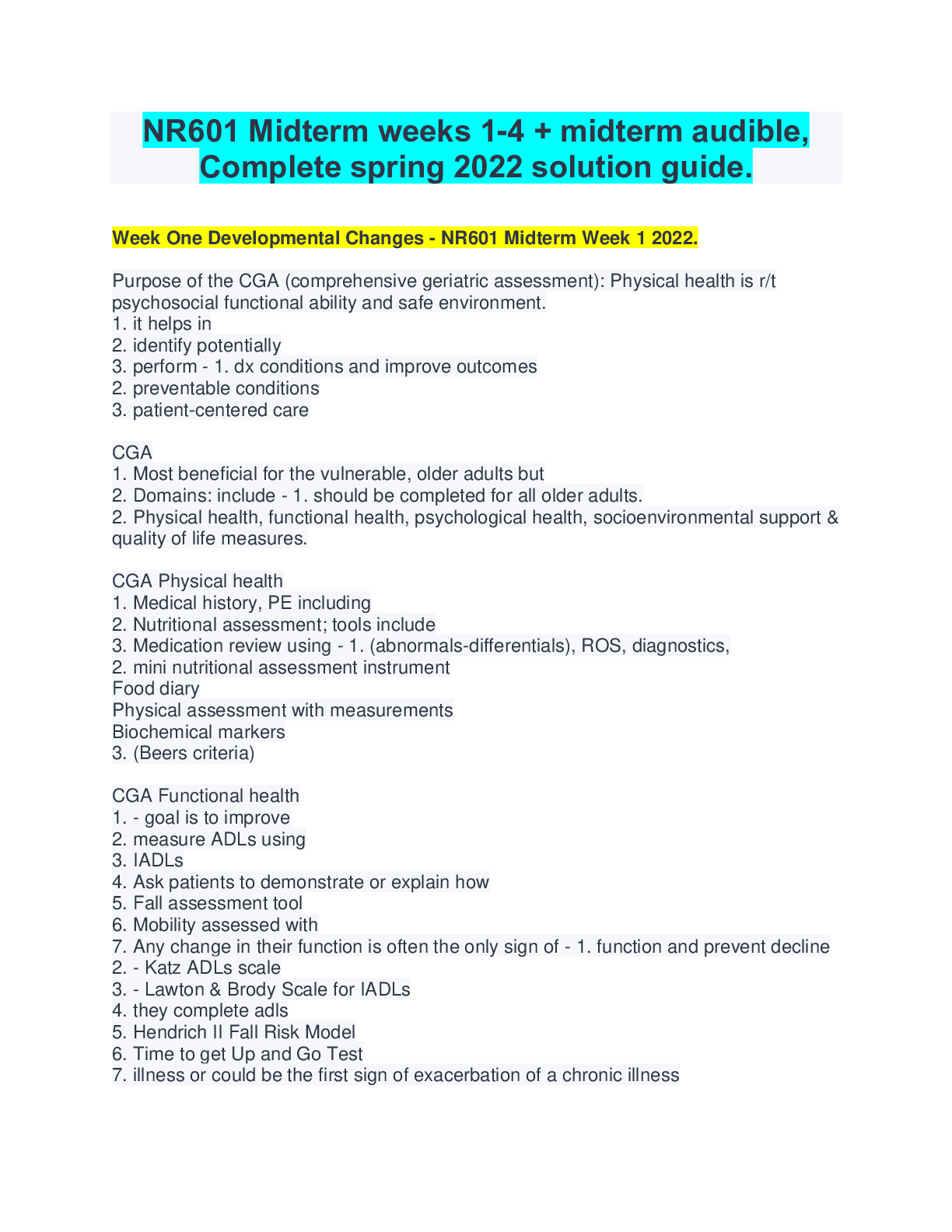
Reviews( 0 )
Document information
Connected school, study & course
About the document
Uploaded On
Mar 25, 2022
Number of pages
77
Written in
Additional information
This document has been written for:
Uploaded
Mar 25, 2022
Downloads
0
Views
123



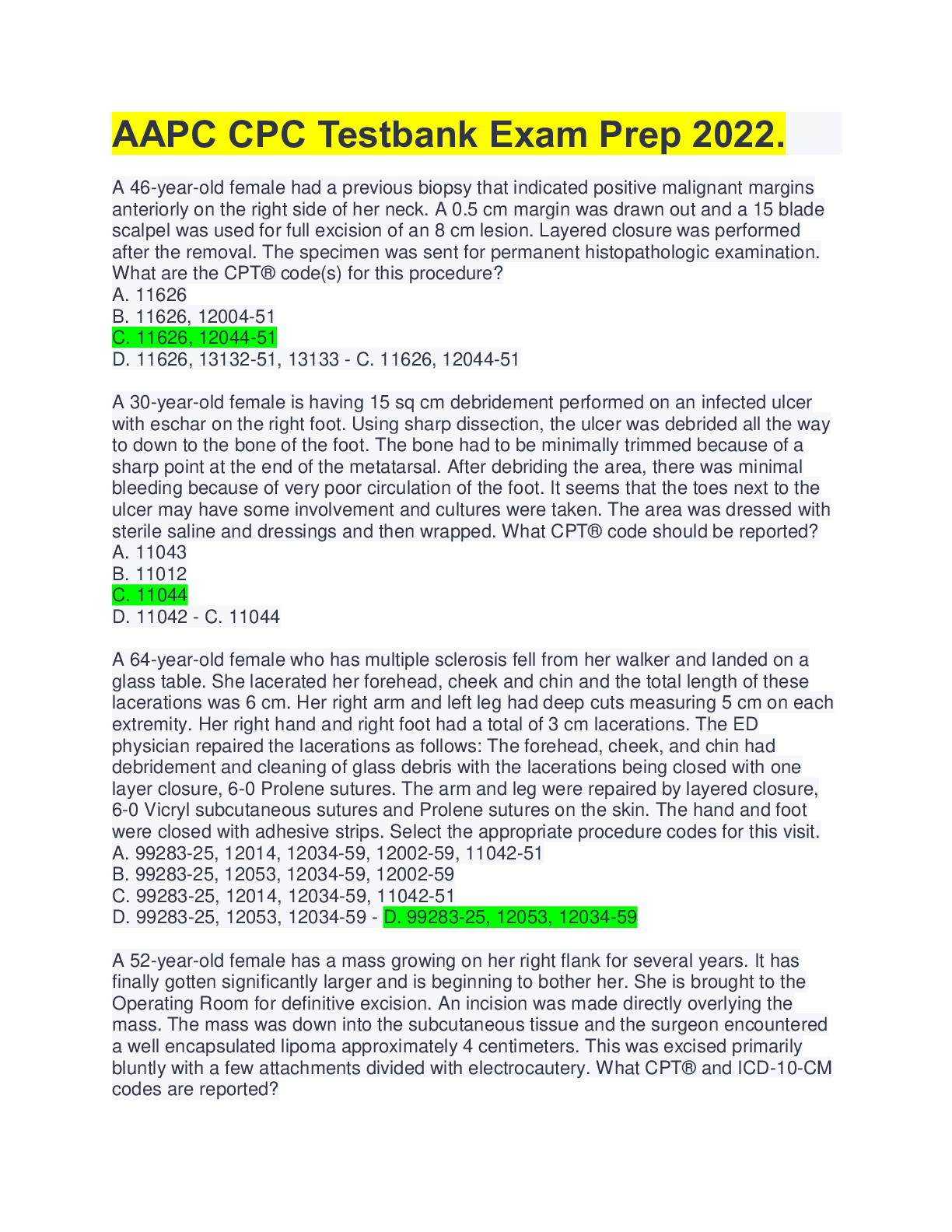
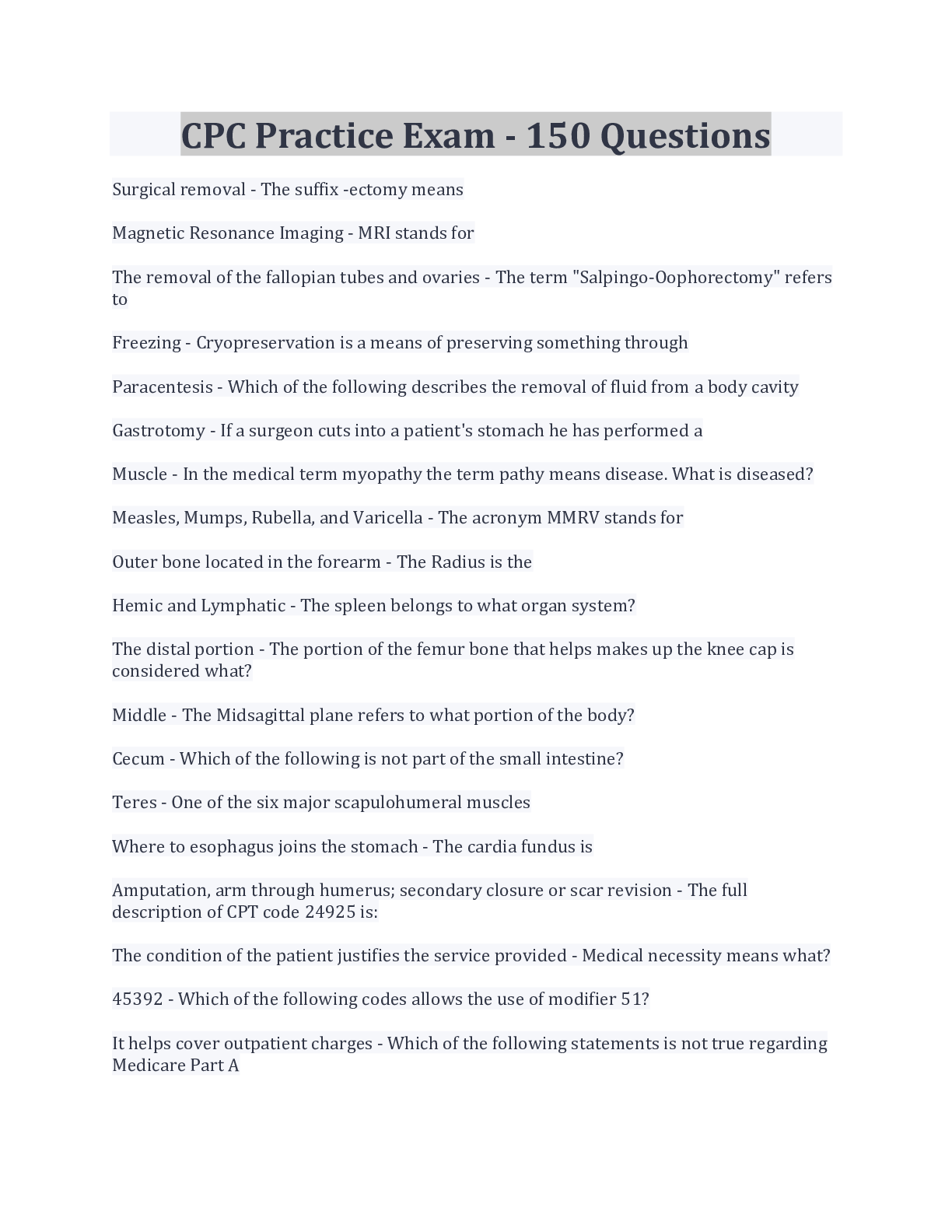
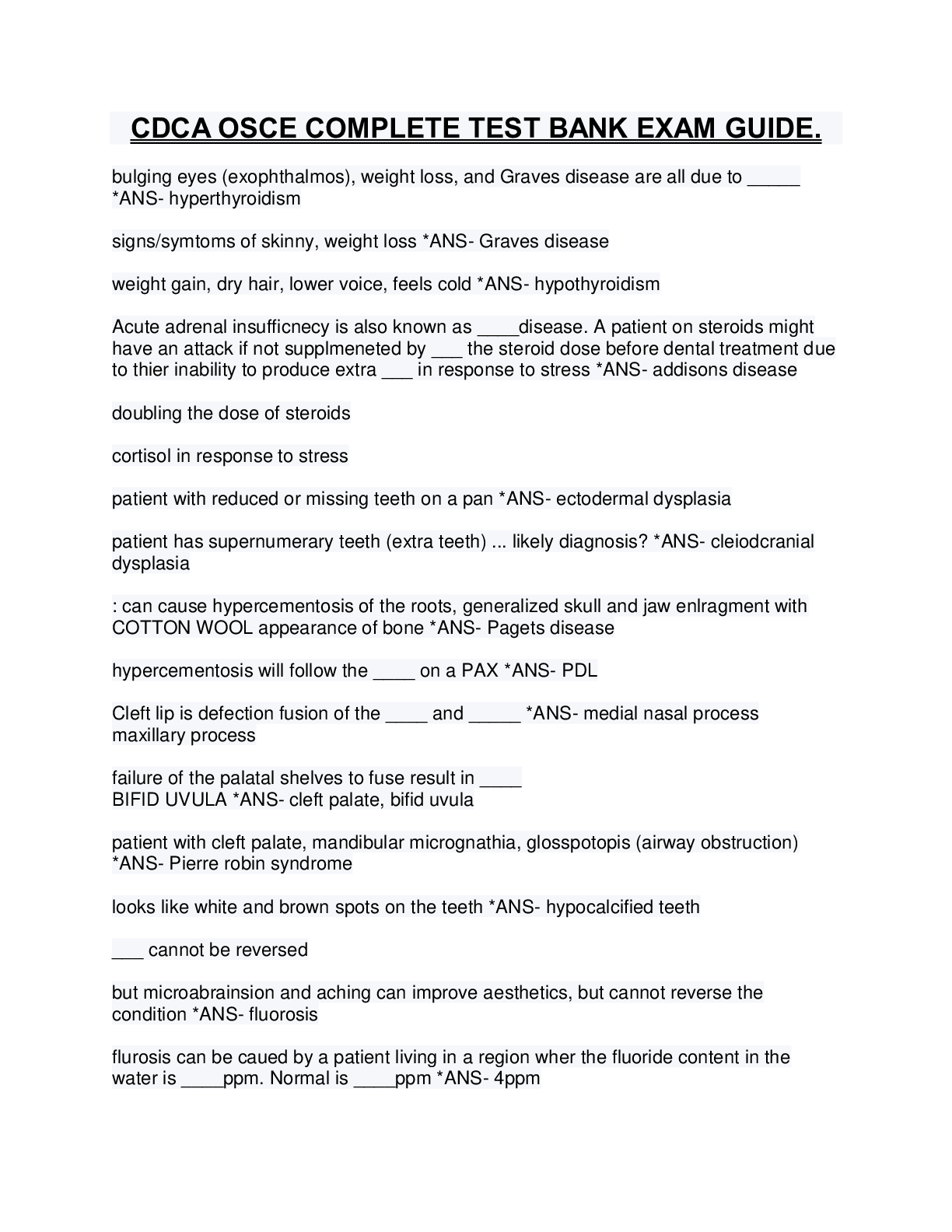
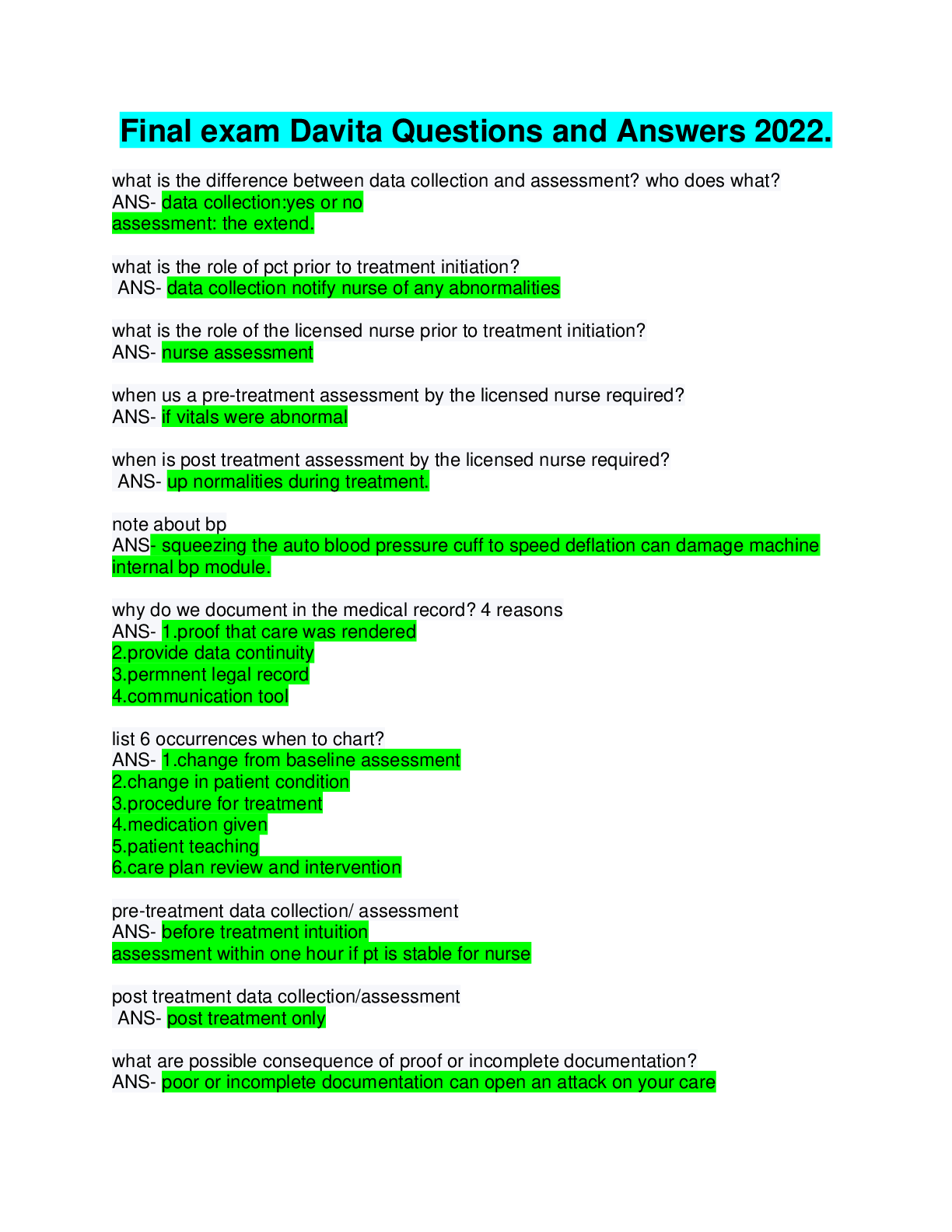
 2022.png)
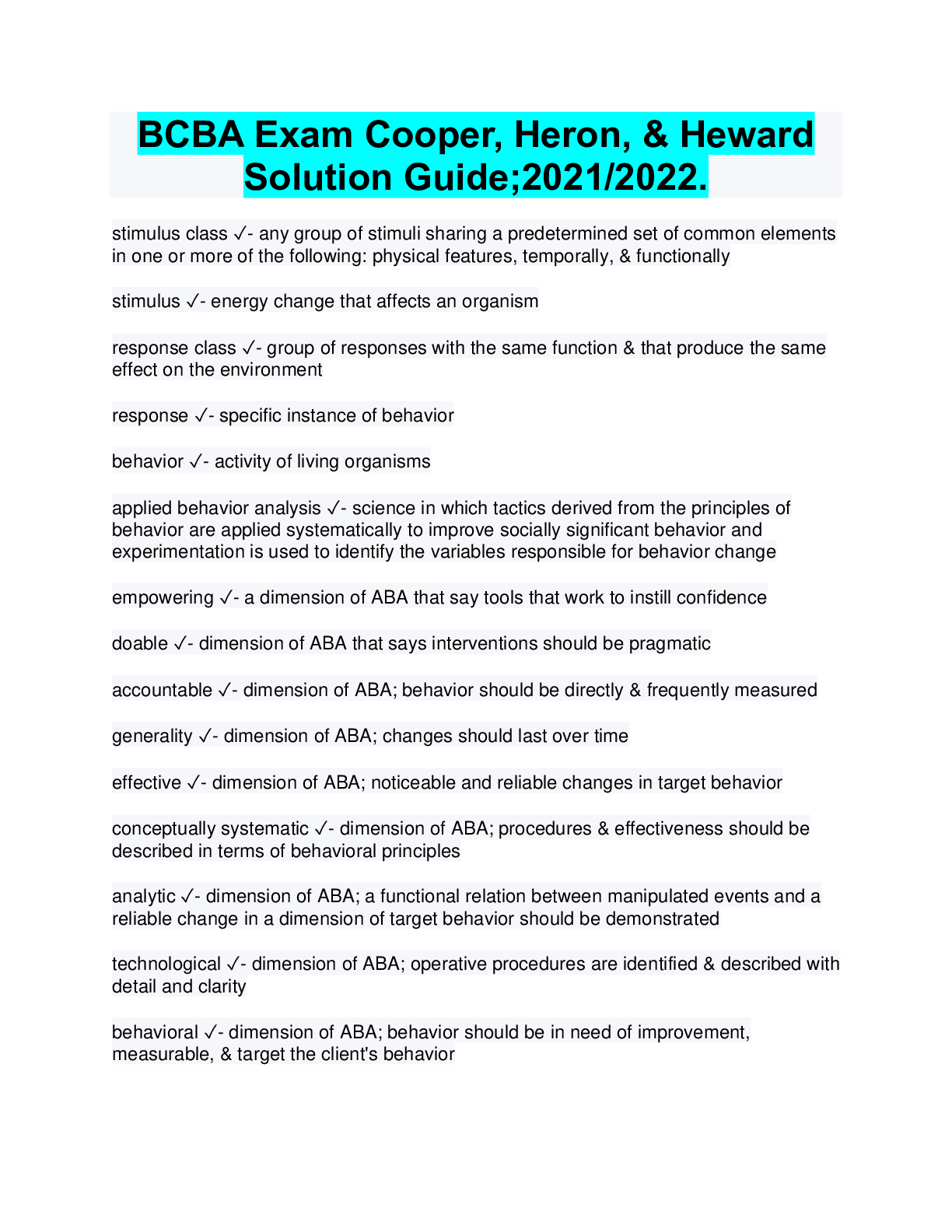
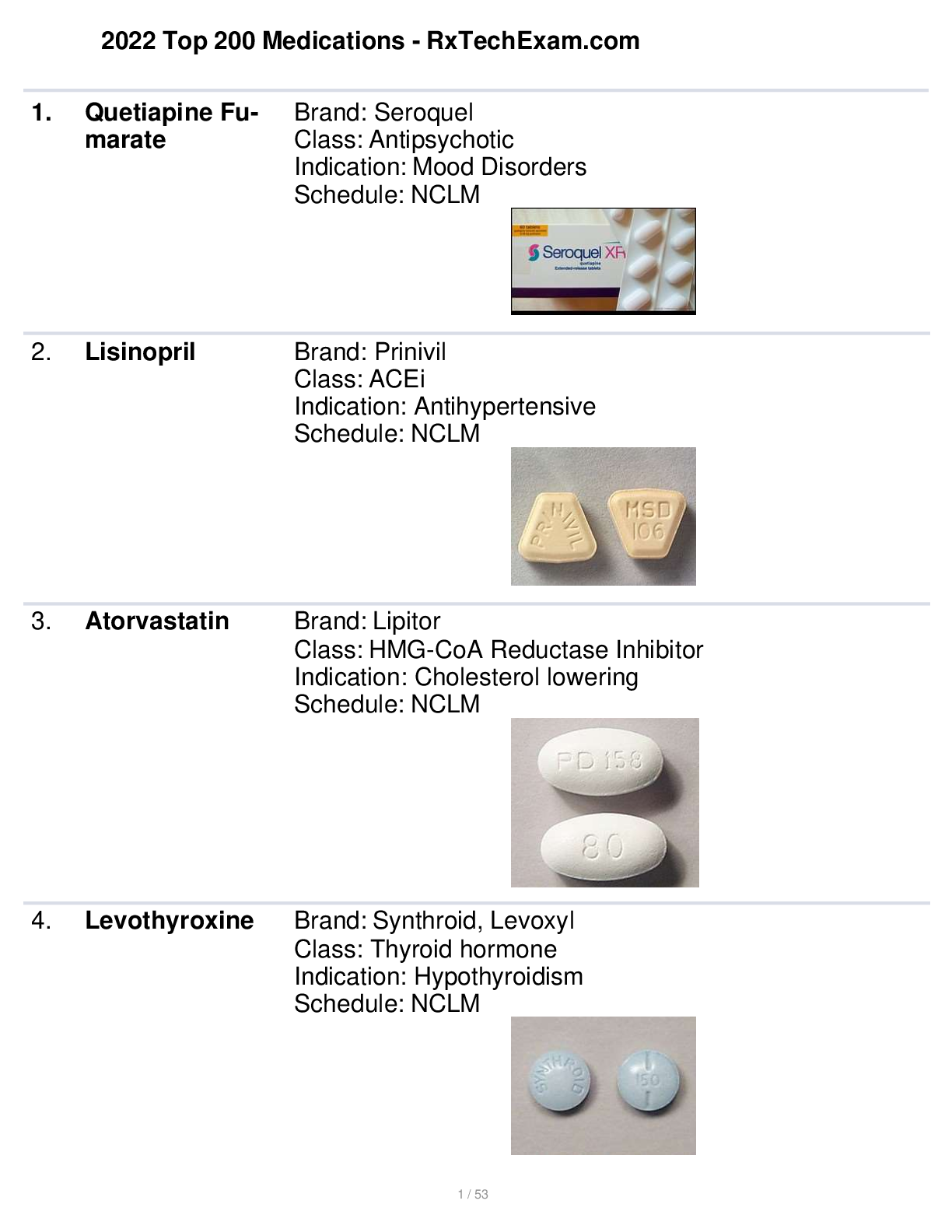

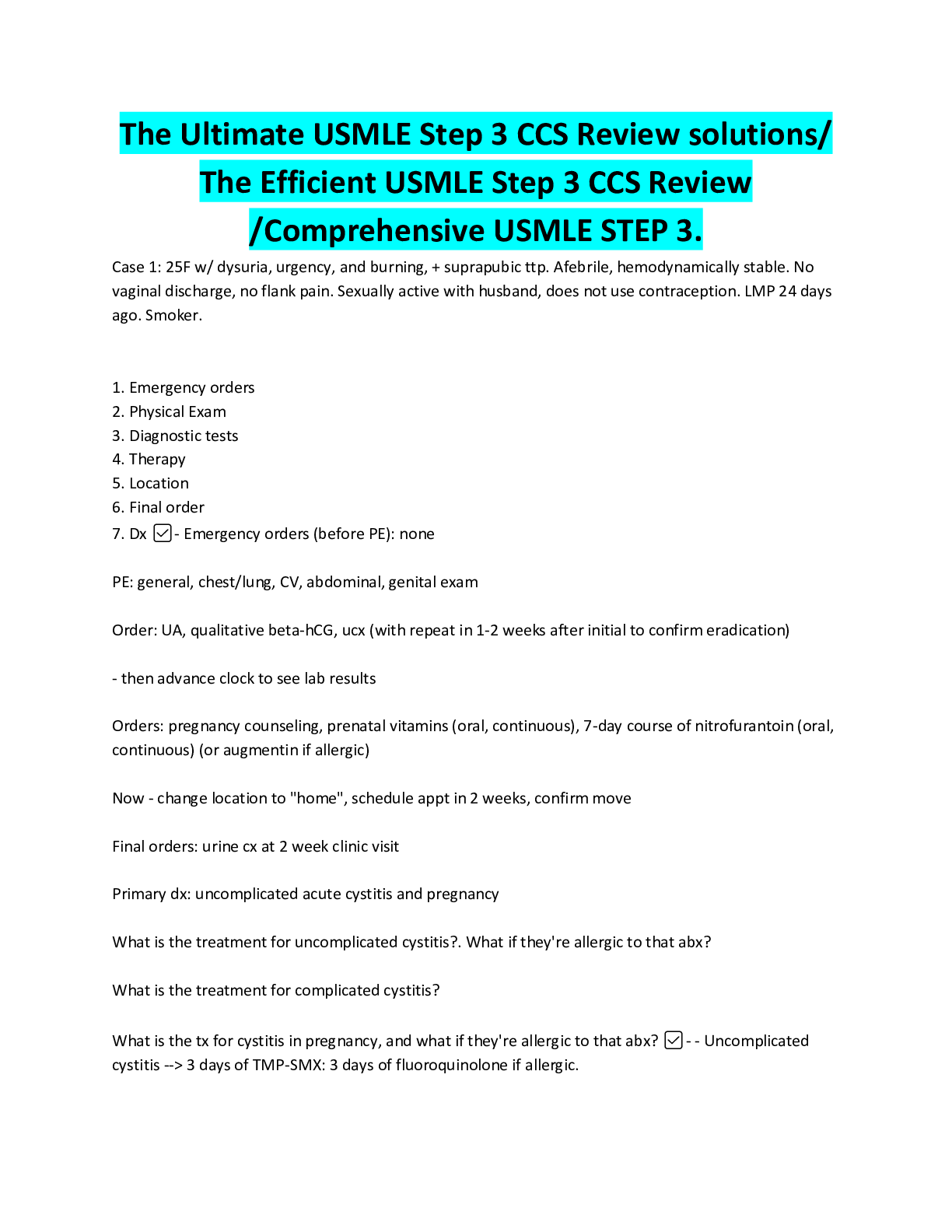




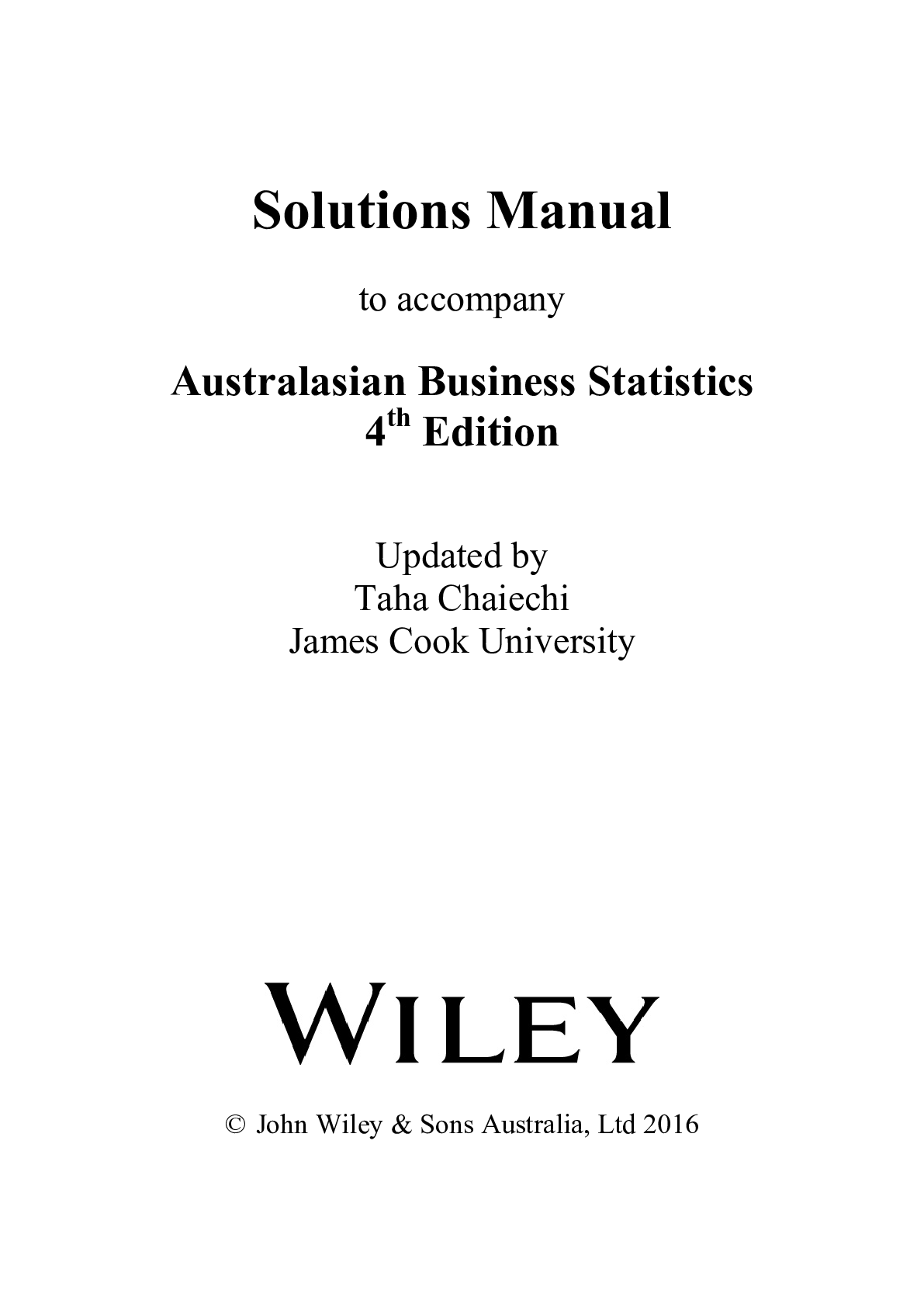

.png)
